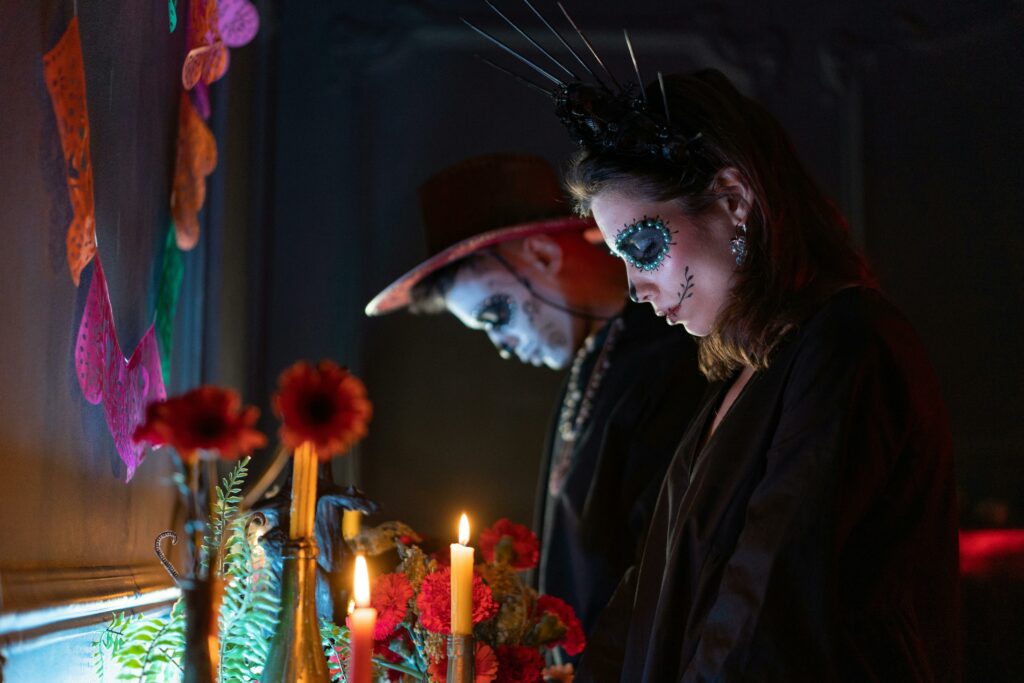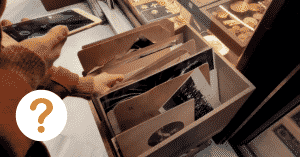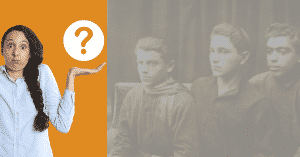Day of the Dead takes place on November 1 and 2. It sees families coming together to welcome the spirits of their loved ones.
The celebrations are marked by lively gatherings, special foods, and altars decorated with offerings.
This Mexican festival features symbols like marigolds, sugar skulls, and candles. They each holdits unique meaning in the rituals of remembrance.
These customs aren’t confined to Mexico. This tradition has found its way into communities around the world. The Day of the Dead is a perfect example of how ancient practices can unite people. So, let’s learn more about it.
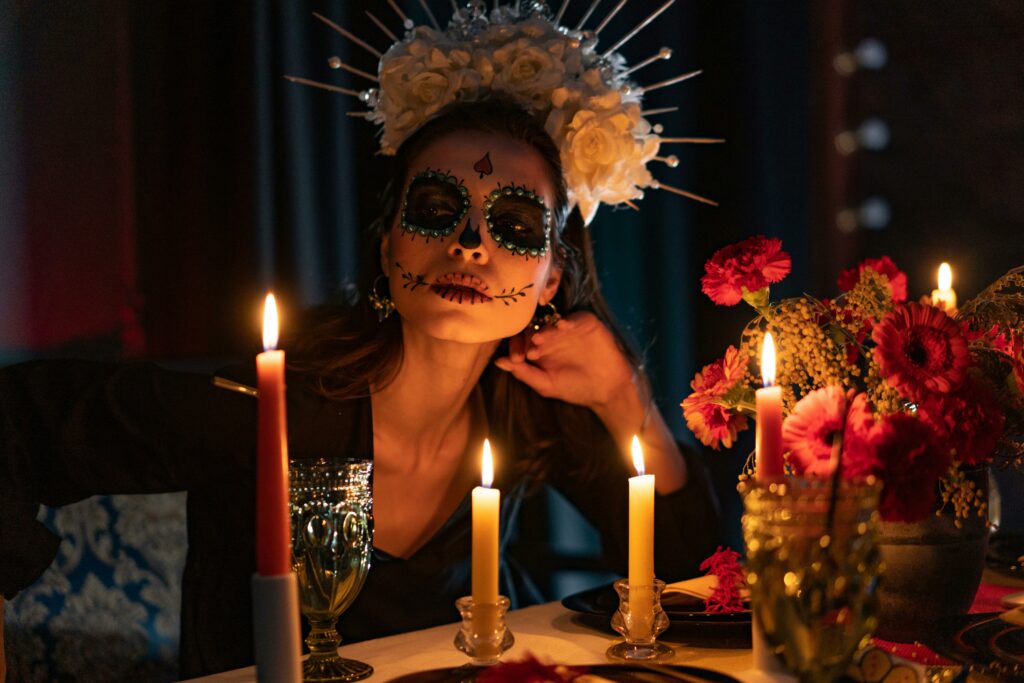
Join Our Community of Memory Keepers!
Become part of a dedicated group where you can revive and celebrate your treasured memories. Get exclusive access to expert photo restoration tips, share your stories, and connect with people who value preserving the past. Join our Facebook Group today for free and start preserving your legacy!
What is the Historical Background of the Day of the Dead?
The Day of the Dead combines ancient rituals with Catholic traditions. This blend creates a vibrant and meaningful celebration.
This mix of history and culture can be seen in the way families remember their ancestors.
Pre-Hispanic Origins
The Day of the Dead has its roots in the beliefs of the Aztec and other Indigenous groups in Mesoamerica.
These cultures honored their dead with festive ceremonies. They believed that death was a natural part of life’s cycle. Skulls were used prominently in their rituals as symbols of both death and rebirth.
Celebrations were led by the goddess Mictecacihuatl, known as the “Lady of the Dead.” The festivities lasted a whole month, aligning with the ninth month of the Aztec calendar.
Flowers, food, and drink were offered to the departed to encourage their return to the living world. This period was a time of joy, not sorrow.
How Did Catholicism Influence?
With the arrival of the Spanish in the 16th century, the Indigenous peoples of Mexico were introduced to Roman Catholicism.
The Spanish conquerors began converting native populations. So, they merged their own religious practices with existing rituals.
The Day of the Dead was moved to coincide with Catholic holidays,. Specifically All Saints’ Day and All Souls’ Day on November 1 and 2.
Incorporating Catholicism involved making altars (ofrendas). They were put in n homes and cemeteries to honor deceased loved ones. These altars included religious symbols like crosses and pictures of saints.
Evolution of Traditions
Over centuries, the Day of the Dead evolved. It adapted new elements while preserving core traditions.
UNESCO recognized this rich cultural heritage in 2008. It was listed as an Intangible Cultural Heritage of Humanity.
Family gatherings still form the heart of the festival. People clean graves, cook favorite foods of the dead, and create colorful, elaborate altars.
Items like marigolds, sugar skulls, and pan de muerto (bread of the dead) are essential parts of the celebration. They’re each with different meanings, but equally important.
Today, the Day of the Dead is celebrated globally. It’s especially celebrated in communities with Mexican heritage.
Cultural Significance
The Day of the Dead is a rich cultural celebration in Mexico. It honors deceased loved ones, emphasizing community, life, and the cycle of life and death.
Meaning of Life and Death
The Day of the Dead, or Día de los Muertos, demonstrates a unique perspective on life and death. Unlike many cultures that view death with fear, this festival sees it as a natural part of life.
It’s a reminder that death is not the end. Instead, it’s a continuation where the dead maintain a presence among the living.
Ancestors are honored and remembered. It’s because they continue to guide and protect their families. This cultural tradition teaches that life and death are interconnected.
Loved ones are celebrated rather than mourned. This understanding shapes Mexican cultural identity. It’s fostering a more open and accepting view of mortality.
Community and Family
Family and community are at the heart of the Day of the Dead. This time of year brings people together to remember their ancestors.
It strengthens communal ties. People share memories and support each other through shared experiences of loss and remembrance.
In many communities, public celebrations feature parades, music, and dance. These events are not just for remembering the dead but also for celebrating life. They reflect the joy, love, and unity that permeate the festival.
Families pass down these traditions through generations, ensuring a continuous link to their heritage. The Day of the Dead reinforces family bonds, making it a time of togetherness and cultural pride.
Get Your Photos Restored Today!
Discover the beauty of your old memories and get your photos restored today! Bring those moments back to life with our easy and convenient restoration service.
What Are the Symbols and Offerings of the Day of the Dead?
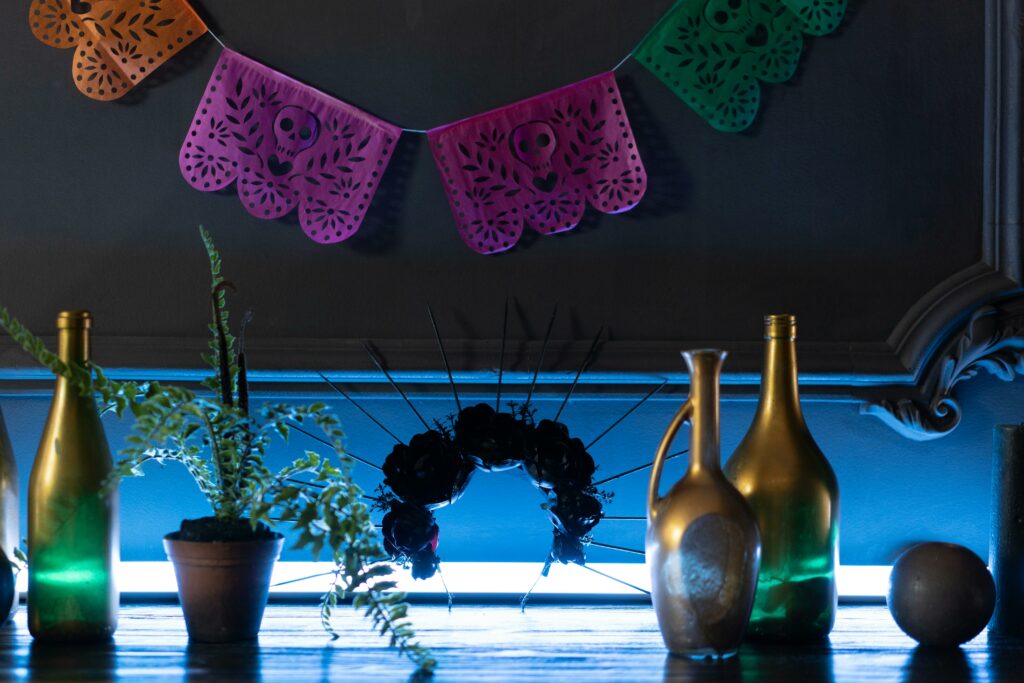
The Day of the Dead is rich with symbols and offerings that reflect Mexican culture and ancestral remembrance.
Key elements include altars (ofrendas), decorated with vibrant marigolds, candles, and personal mementos.
Altars and Ofrendas
Altars, or ofrendas, are the centerpiece of Day of the Dead celebrations. They are created in homes and cemeteries to honor deceased loved ones.
These altars display photographs of the departed, surrounded by marigolds, also known as cempasúchil. Can you smell it? The sweet scent is believed to guide spirits back to the living world.
Candles are placed to light the way. Often, each candle represents a soul. There’s something so hauntingly beautiful about the soft glow amid the decorations.
Iconography of the Festival
Iconography plays a major role in this festival. Skulls, or calaveras, are everywhere.
They’re typically crafted from sugar, creating the iconic sugar skulls that are adorned with colorful icing. Skeletons are also a common sight, symbolizing the cycle of life and death.
They’re often depicted in lively poses. What a vivid reminder that death is just another part of life’s journey.
Marigolds are used extensively, their bright petals adding a burst of color. These flowers are believed to attract souls to the ofrendas.
Food and Objects of Remembrance
Food is an essential part of Day of the Dead.
Pan de Muerto, a special type of bread, is often included on the altars. Its round shape symbolizes the cycle of life.
Traditional dishes vary, but you’ll often find tamales, mole, and other family favorites. Sometimes these foods resonate with the loved one’s favorites.
Objects of remembrance, such as toys for children and candied pumpkin seeds, reflect personal touches. These items create a welcoming space for the spirits. It’s a time to remember with love and joy the lives that once were.
Celebrations and Practices
The Day of the Dead is a vibrant and deeply meaningful festival that honors departed loved ones.
Public Festivities
In Mexico City and other places, parades and public celebrations bring communities together.
Streets and plazas fill with music, dance, and vibrant costumes. The parades feature giant puppets and dancers dressed as skeletons. It’s symbolizing the presence of those who have passed away.
These public festivities offer a lively contrast to the quiet family moments. People paint their faces as skulls and wear traditional clothing. The mix of sounds, colors, and scents fills the air. It creates an unforgettable experience for participants and spectators alike.
Artistic Expressions
Art plays a crucial role in Day of the Dead celebrations. You’ll see sugar skulls, or calaveras, decorated with bright colors and intricate designs. These are often given as gifts or placed on ofrendas.
Papel picado is a type of paper art. It decorates streets and homes with beautiful cut-out patterns depicting scenes of death and rebirth. Artists also create elaborate sand tapestries and sculptures.
Murals and paintings throughout Mexico tell stories. They also share messages about life and death, reflecting cultural values and beliefs.
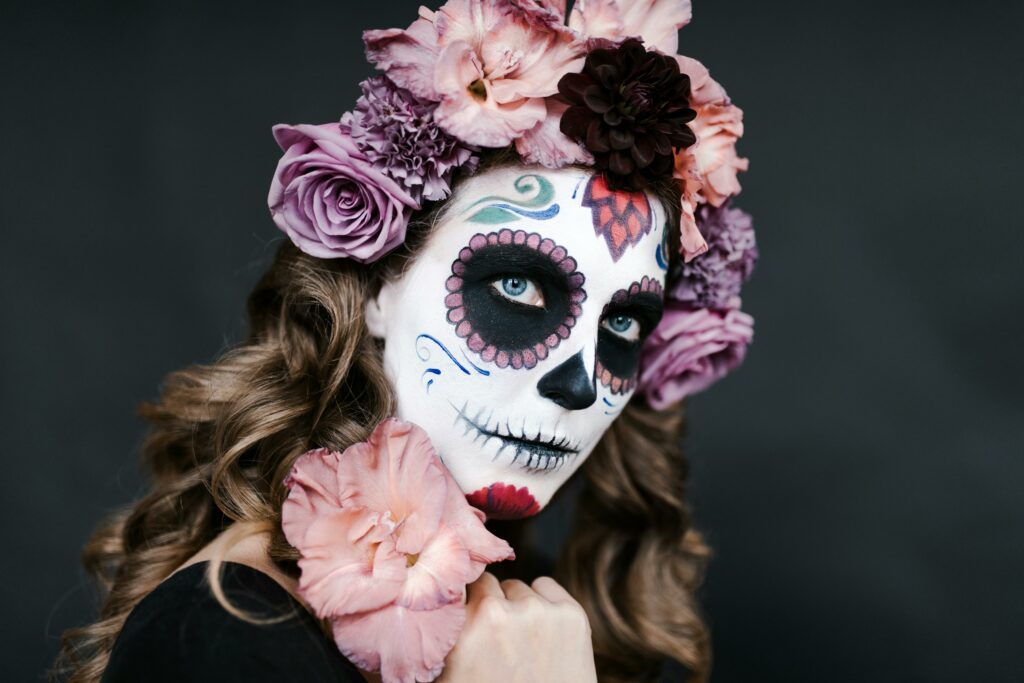
Contemporary Importance in Mexico and Beyond
Can you imagine the vibrant, colorful celebrations of the Day of the Dead? This unique Mexican holiday is more than a festival. It’s a living tradition.
In Mexico, the Day of the Dead, or Día de los Muertos, remains a deeply cultural event.
People gather to remember their ancestors with music, altars, and traditional foods. Schools teach children the significance of this holiday, ensuring its traditions are passed on.
Beyond Mexico, this celebration spreads its influence to various parts of Latin America.
In the U.S., Mexican communities honor the Day of the Dead through public festivities, art installations, and parades. This brings a sense of identity and belonging among Mexicans abroad.
UNESCO recognizes the cultural value of this tradition. It has added it to its list of Intangible Cultural Heritage. This recognition helps preserve the celebration and share its rich history with the world.
Here are some ways the Day of the Dead has inspired people:
- Art exhibitions: Many museums showcase Day of the Dead-themed artwork.
- Literature: Books and poems tell the stories of this beautiful festival.
- Educational programs: Schools and cultural centers teach about its history and customs.
These activities help people of all backgrounds understand and value the Day of the Dead. As it gains global recognition, its meaning and beauty enrich everyone who experiences its magic, not just Mexicans.
Join Our Community of Memory Keepers!
Become part of a dedicated group where you can revive and celebrate your treasured memories. Get exclusive access to expert photo restoration tips, share your stories, and connect with people who value preserving the past. Join our Facebook Group today for free and start preserving your legacy!
Conclusion
The Day of the Dead is a vibrant celebration of life and memory. It honors the deceased with joy and reverence. Traditions include altars, marigolds, and sugar skulls. Families gather to share stories and offerings.
This unique blend of indigenous and Catholic practices keeps history alive. The Day of the Dead teaches us to embrace mortality. It reminds us that love transcends death. This festival is a beautiful testament to the power of remembrance.

